Abstract
Interferon-treated cultures of Ly cells survived initial infection with high multiplicities of vesicular stomatitis (VSV) or herpes simplex virus (HSV). In the case of HSV, infectious virus and intracellular viral antigen were rapidly eliminated from the interferon-treated cultures, and the cells grew out to form apparently normal monolayers that could be cultured indefinitely. In the VSV-infected Ly cultures, virus titers remained at low levels in interferon-treated cells but after about 14 days rapidly rose and the culture was destroyed. If interferon was added to the medium on days 4 and 6 after infection, virus titers rapidly declined but again recovered and the cells were destroyed. If, however, interferon treatment was resumed 9 days after initial infection, detectable infectious VSV was eliminated from the medium. Several methods, including cocultivation and molecular hybridization, failed to demonstrate persistence of a significant portion of the VSV genome in these cultures.
Full text
PDF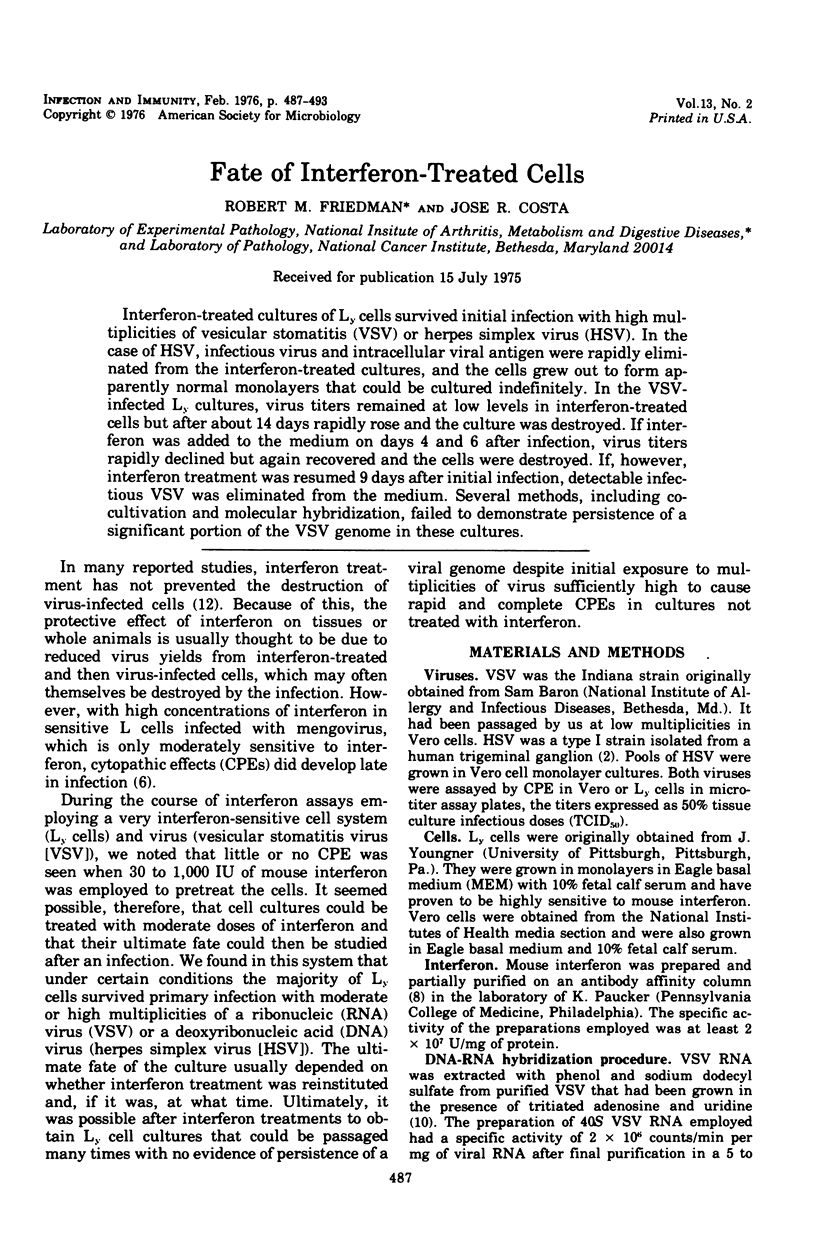
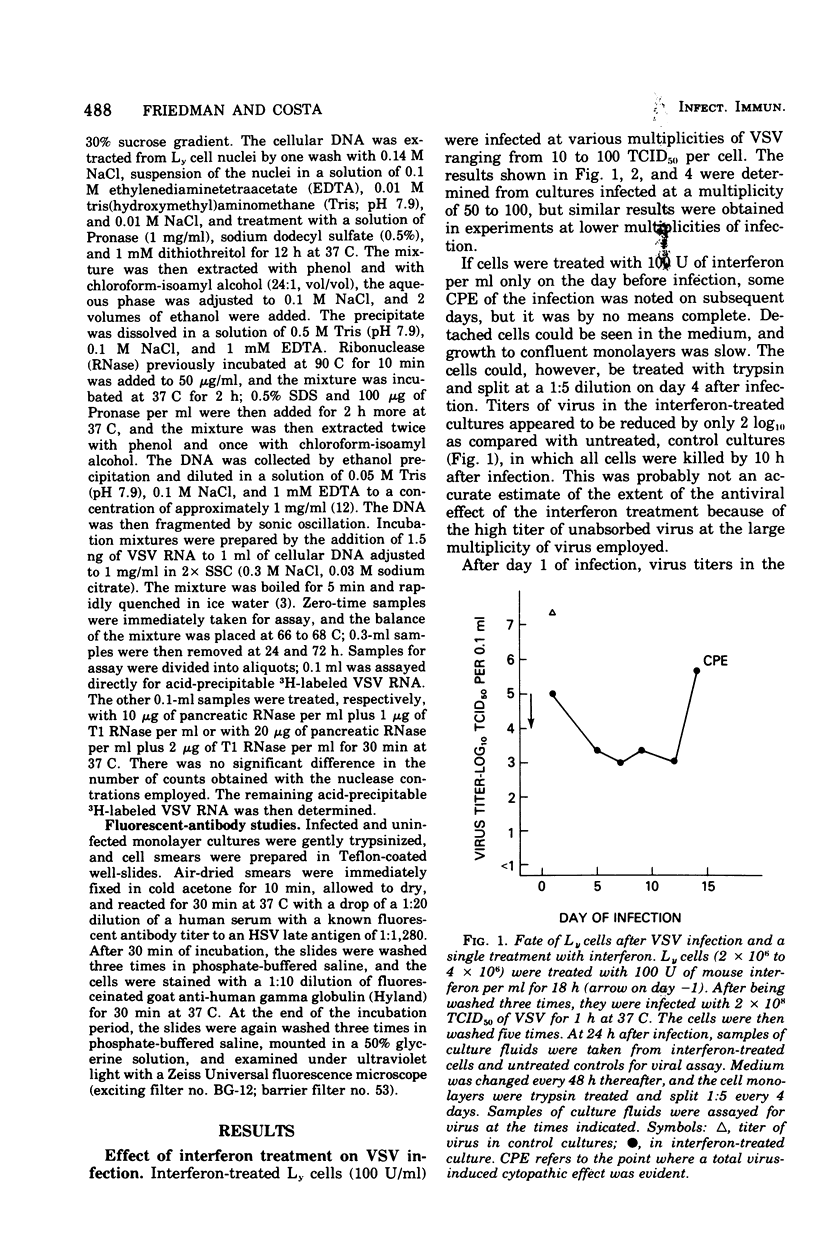
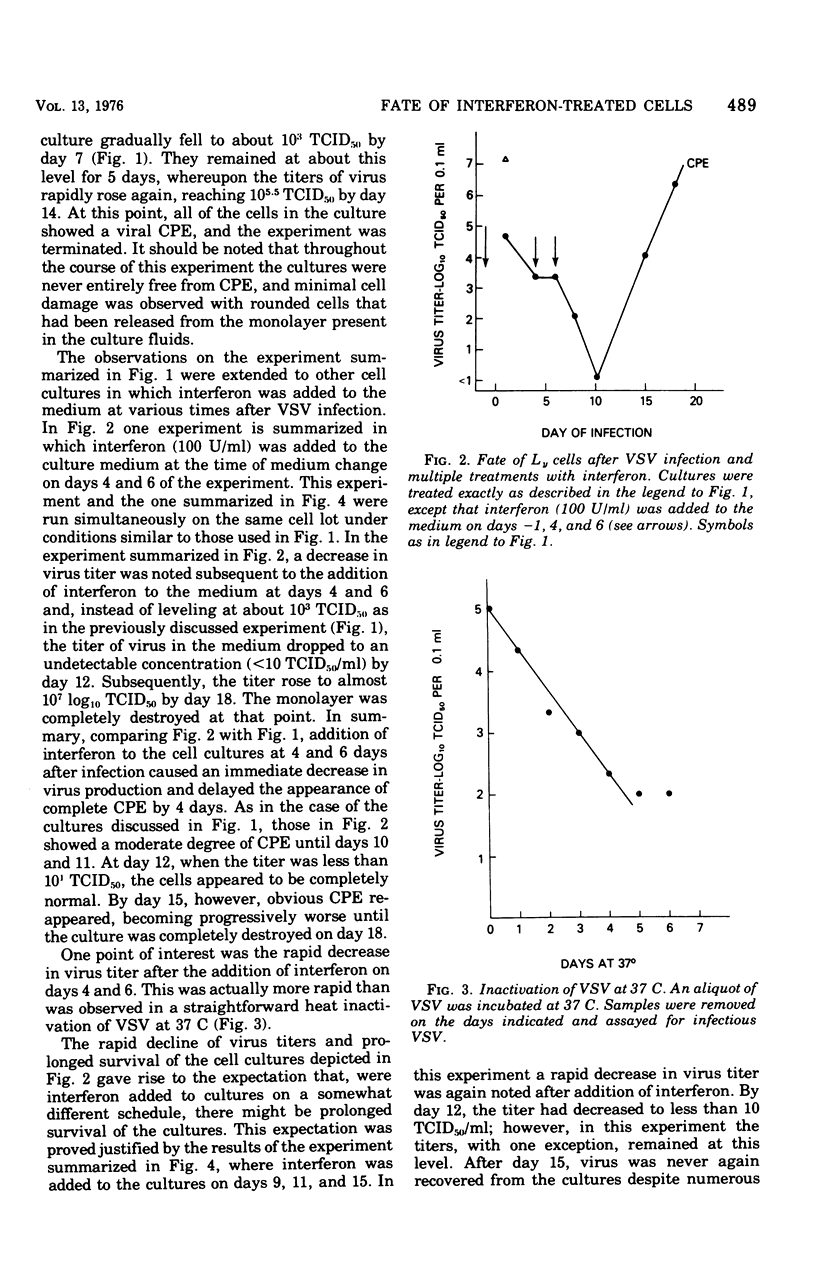
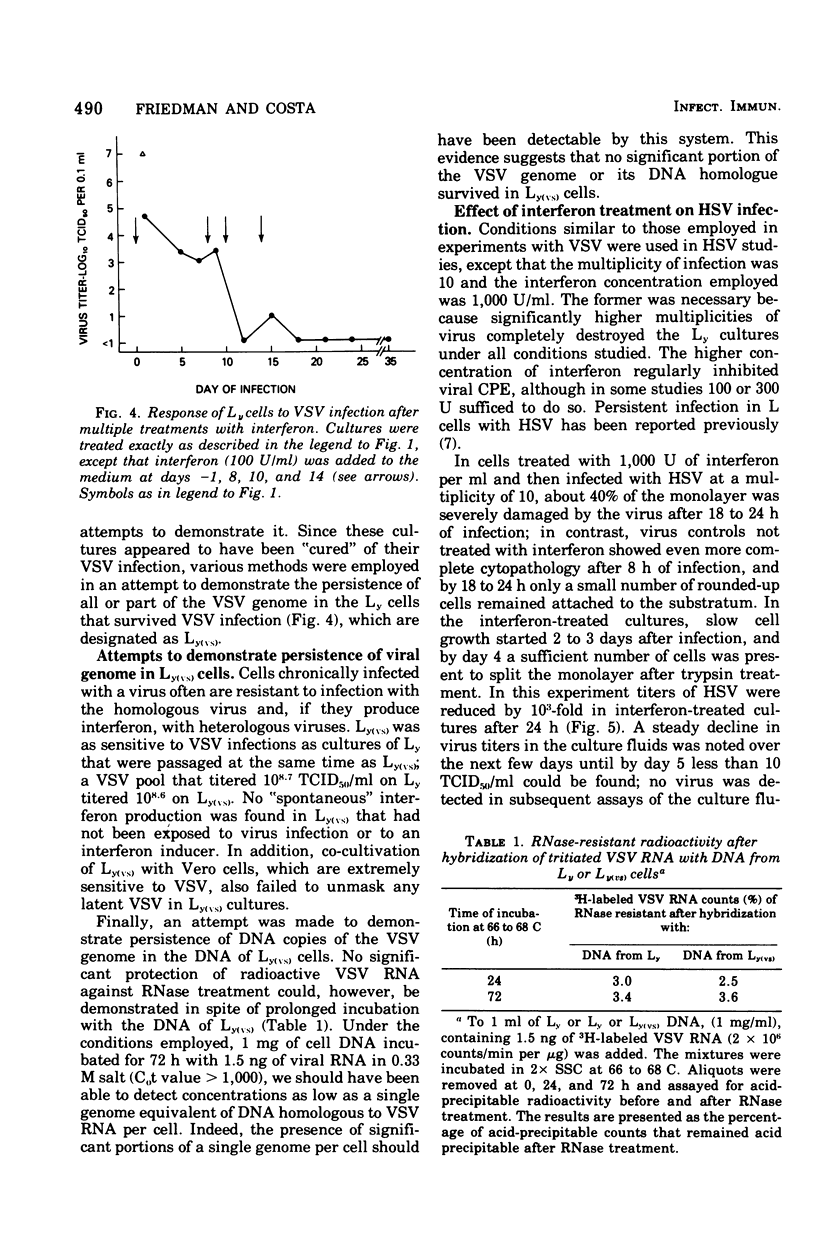
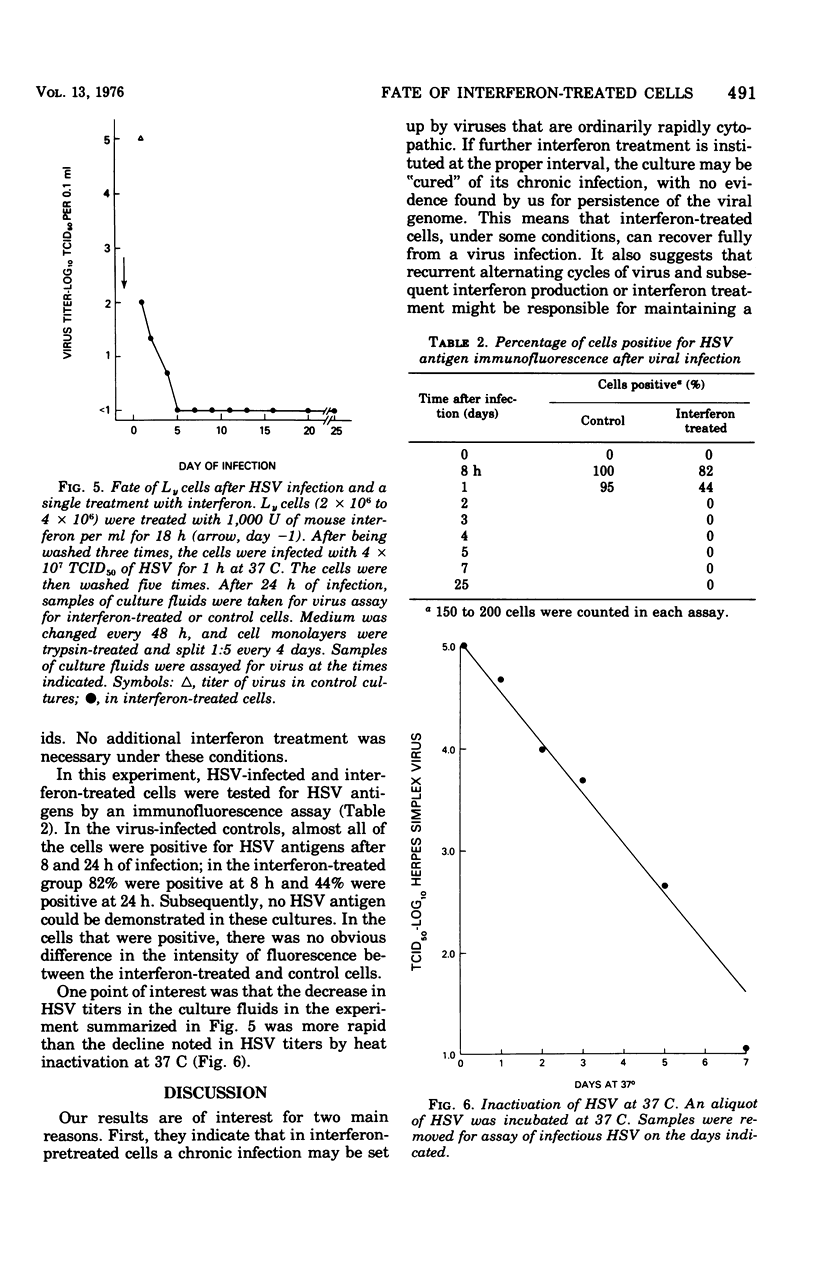
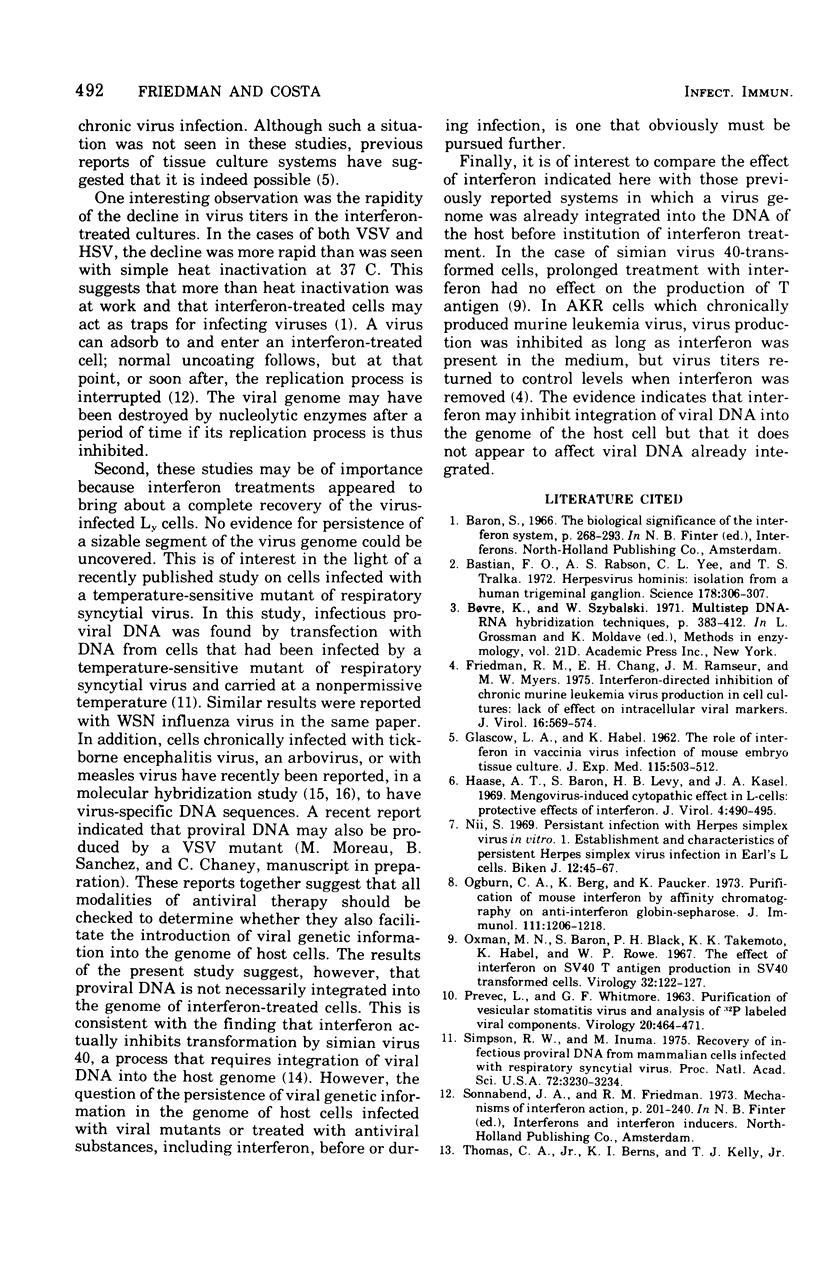
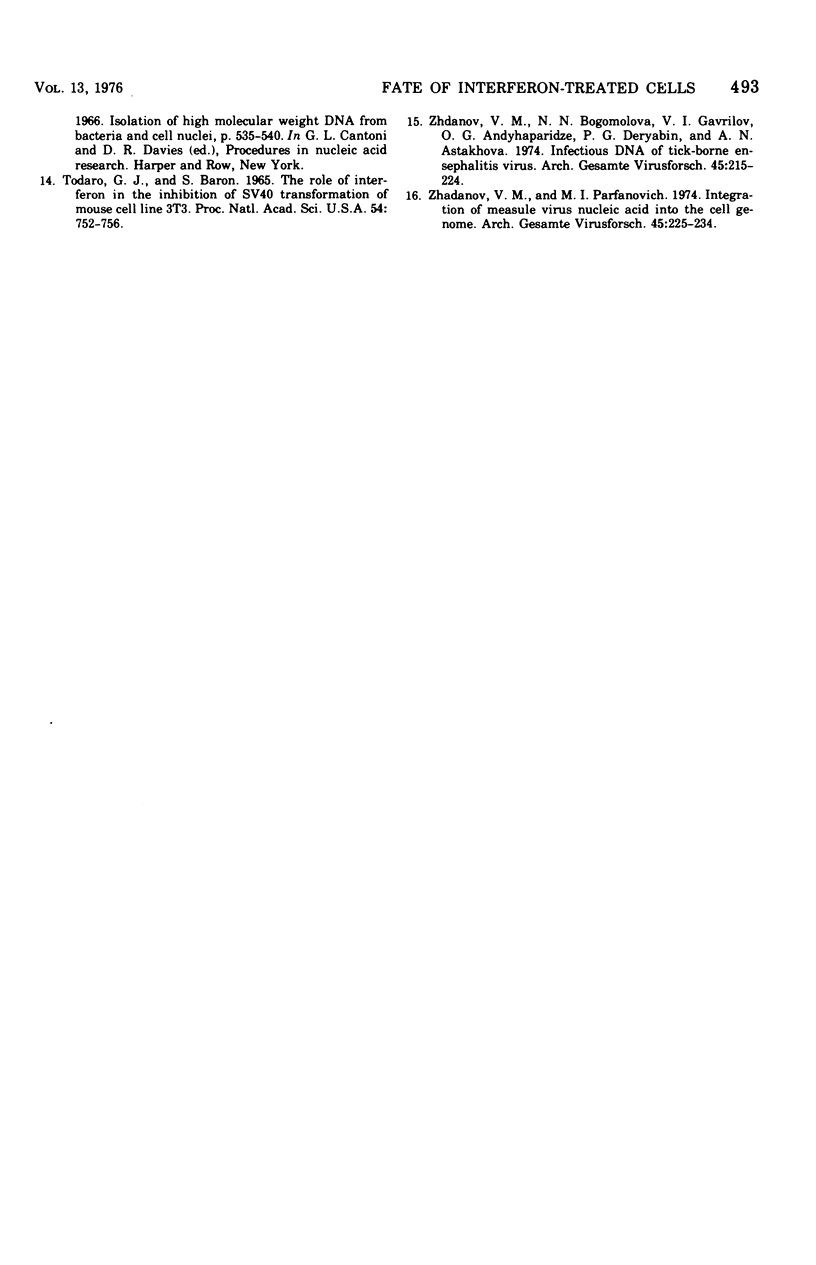
Selected References
These references are in PubMed. This may not be the complete list of references from this article.
- Bastian F. O., Rabson A. S., Yee C. L., Tralka T. S. Herpesvirus hominis: isolation from human trigeminal ganglion. Science. 1972 Oct 20;178(4058):306–307. doi: 10.1126/science.178.4058.306. [DOI] [PubMed] [Google Scholar]
- Friedman R. M., Chang E. H., Ramseur J. M., Myers M. W. Interferon-directed inhibition of chronic murine leukemia virus production in cell cultures: lack of effect on intracellular viral markers. J Virol. 1975 Sep;16(3):569–574. doi: 10.1128/jvi.16.3.569-574.1975. [DOI] [PMC free article] [PubMed] [Google Scholar]
- GLASGOW L. A., HABEL K. The role of interferon in vaccinia virus infection of mouse embryo tissue culture. J Exp Med. 1962 Mar 1;115:503–512. doi: 10.1084/jem.115.3.503. [DOI] [PMC free article] [PubMed] [Google Scholar]
- Haase A. T., Levy H., Baron S., Kasel J. A. Mengovirus-induced cytopathic effect in L-cells: protective effect of interferon. J Virol. 1969 Oct;4(4):490–495. doi: 10.1128/jvi.4.4.490-495.1969. [DOI] [PMC free article] [PubMed] [Google Scholar]
- Nii S. Persistent infection with herpes simplex virus in vitro. 1. Establishment and characteristics of persistent herpes simplex virus infection in Earle's L cells. Biken J. 1969 Jun;12(2):45–67. [PubMed] [Google Scholar]
- Ogburn C. A., Berg K., Paucker K. Purification of mouse interferon by affinity chromatography on anti-interferon globulin-sepharose. J Immunol. 1973 Oct;111(4):1206–1218. [PubMed] [Google Scholar]
- Oxman M. N., Baron S., Black P. H., Takemoto K. K., Habel K., Rowe W. P. The effect of interferon on SV-40 T antigen production in SV-40-transformed cells. Virology. 1967 May;32(1):122–127. doi: 10.1016/0042-6822(67)90260-7. [DOI] [PubMed] [Google Scholar]
- PREVEC L., WHITMORE G. F. PURIFICATION OF VESICULAR STOMATITIS VIRUS AND THE ANALYSIS OF P32-LABELED VIRAL COMPONENTS. Virology. 1963 Jul;20:464–471. doi: 10.1016/0042-6822(63)90095-3. [DOI] [PubMed] [Google Scholar]
- Simpson R. W., Iinuma M. Recovery of infectious proviral DNA from mammalian cells infected with respiratory syncytial virus. Proc Natl Acad Sci U S A. 1975 Aug;72(8):3230–3234. doi: 10.1073/pnas.72.8.3230. [DOI] [PMC free article] [PubMed] [Google Scholar]
- Todaro G. J., Baron S. The role of interferon in the inhibition of SV40 transformation of mouse cell line 3T3. Proc Natl Acad Sci U S A. 1965 Sep;54(3):752–756. doi: 10.1073/pnas.54.3.752. [DOI] [PMC free article] [PubMed] [Google Scholar]
- Zhdanov V. M., Bogomolova N. N., Gavrilov V. I., Andzhaparidze O. G., Deryabin P. G., Astakhova A. N. Infectious DNA of tick-borne encephalitis virus. Arch Gesamte Virusforsch. 1974;45(3):215–224. doi: 10.1007/BF01249684. [DOI] [PubMed] [Google Scholar]
- Zhdanov V. M., Parfanovich M. I. Integration of measles virus nucleic acid into the cell genome. Arch Gesamte Virusforsch. 1974;45(3):225–234. doi: 10.1007/BF01249685. [DOI] [PubMed] [Google Scholar]


